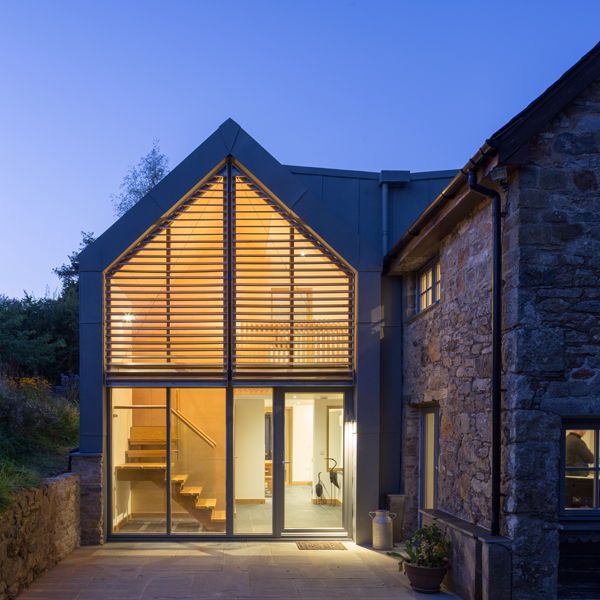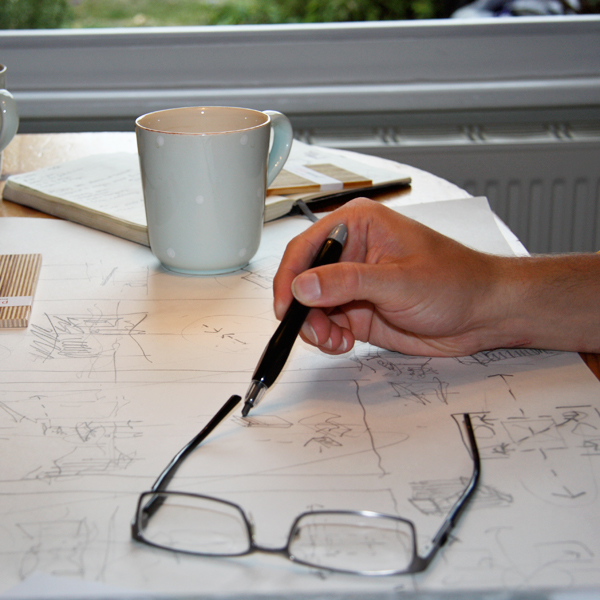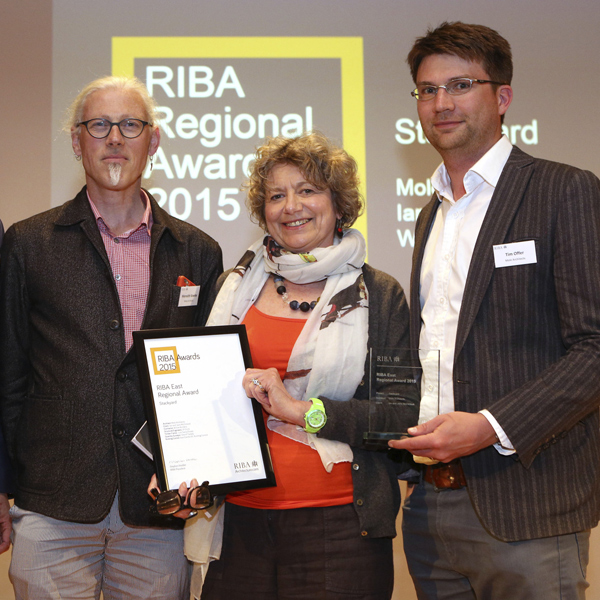Our workstages loosely follow the RIBA plan of work, but have been adapted to the major project milestones:
Stage 1-2: Briefing, Initial Proposals
Each project starts with the gathering of information. A thorough briefing process is the most important stage of any job to ensure that the right questions are being asked and that the solutions will address the needs of the project.
At this stage a full survey will be undertaken, and we will engage in a number of conversations to establish what the needs and aspirations of the project are. This often results in questioning and putting aside initial assumptions. You will also need to develop your own ideas for the project – how you imagine you will use the spaces and what they might look and feel like.
The initial brief is then developed into ideas and concept proposals through sketches and models. At this stage we also consider basic constructional and environmental concerns. There may be a number of options or variations that reflect different solutions to the problem.
The major output of stage 2 is a report that brings all of these options and details together for discussion, and agreement for how to move forwards.
Stage 3: Design Development, Planning
Stage 3 takes the initial proposals and develops these into a coherent design ready for a planning application where required. Drawings, models and reports bring together all of the information and develop the proposal ready for submission. Careful research is also undertaken into the planning context and history.
We are meticulous about the information that we submit, using a number of methods to best describe the scheme. We have experience of making successful applications in conservation areas and to listed buildings, within the national park and areas of outstanding natural beauty and have been praised for the thorough and comprehensive quality of our applications and our conduct throughout the process.
Even where planning is not required, this stage is an important phase of development of the project from the initial proposals ready for detailed and technical design.
The major output of stage 3 is a planning submission to the local authority.
Stage 4: Detailed Design, Building Regulations, Technical Design
When planning permission is granted, the next steps are to develop the technical information of how the project will be built. Stages 4 can be split depending on the service to be provided.
At stage 4 other consultants such as structural engineers become more involved and the building fabric and performance are developed and finalised.
A simplified stage 4a develops the scheme ready for a building regulations submission.
Stage 4b develops this information into a full set of details and specifications for contractors to prepare full tenders. At this stage all of the final decisions on materials and products will be made and the way that elements come together finalised. A full set of detailed designs means that you know what is being priced, and that you can compare prices accurately.
The major output of stage 4 is a tender submission to a number of builders to get accurate quotes for the work.
Stage 5: Tender Documentation, Construction, Contract Administration
Following the selection of a contractor, construction can start.
All of the construction information, details and specifications are brought together, and a contract formed between you and the contractor. This will set out exactly what is to be built, how much this will cost, and how long it will take.
Throughout the construction phase we act as contract administrator, checking progress and quality of work, responding to queries and requests for information, and monitoring the financial aspects of the project.
We will visit site regularly through this stage, and at practical completion will gather information and inspect the work ready for handover. After you have moved in we will assist in coordinating any further work that is required and settling the final accounts, as well as helping you to get to know your new building.
Stage 1: Briefing, Initial Proposals
[continue reading]
Stage 2: Design Development, Planning
[continue reading]
Stage 3: Detailed Design, Building Regulations
[continue reading]
Stage 4:Technical Design, Tender Documentation
[continue reading]
Stage 5: Construction, Contract Administration
[continue reading]











Leave a Reply
You must be logged in to post a comment.